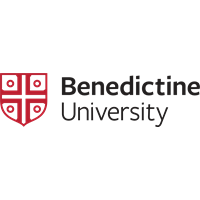Below is a summary of the abstract you submitted. Presenting author(s) is shown in bold.
If any changes need to be made, you can modify the abstract or change the authors.
You can also download a .docx version of this abstract.
If there are any problems, please email Dan at dar78@pitt.edu and he'll take care of them!
This abstract was last modified on May 21, 2024 at 3:21 p.m..

Phages are viruses that infect bacteria and recently have gained potential as therapeutics for difficult to treat infections. Phages can replicate through the lytic cycle or integrate in the bacterial chromosome through the lysogenic cycle. The current work focuses on phage Piku, isolated using the soil bacterial host Arthrobacter globiformis 2979. Previous work characterized Piku’s viral structure and infection range. Structurally, Piku belongs to the Podoviridae family as it possesses a short non-contractile tail. Piku infects at cooler temperatures (22 – 30°C) and its host range does not expand beyond A. globiformis strains. Based on plaque characteristics, it was hypothesized that Piku infects A. globiformis through the lytic cycle. Its genome was sequenced through the SEA-PHAGES program for annotation. We utilized various bioinformatic programs to characterize each potential open reading frame (ORF) and/or genomic region. The genome sequence is 15675 bp long and contains 22 ORFs. Two sequences were deleted due to lack of bioinformatic data. Its genome is most similar to the phages Yavru and Whytu present in the Arthrobacter Cluster FE. We identified holin and endolysin genes needed for bacterial cell lysis. An integrase gene was not identified suggesting that Piku is a lytic phage. Through the annotation program DNA Master, we selected potential restriction sites to generate a DNA fingerprint of the genome with 4 out of 6 enzymes showing fragment results. In the future, we would like to characterize 3 predicted transcriptional regulators and their role in phage infection.
Acknowledgement: Dr. Karen Klyczek, University of Wisconsin-River Falls for TEM images done at the University of Minnesota. Benedictine University undergraduate research. Preliminary work done by student Bisma Khan. SEA-PHAGES; (Science Education Alliance-Phage Hunters Advancing Genomics and Evolutionary Science), PUMA-STEM; Funded by the Louis Stokes Alliances for Minority Participation (award number 1911341)

